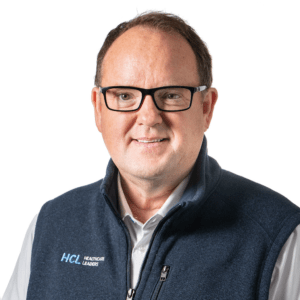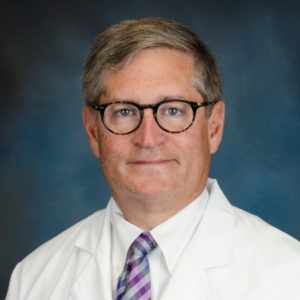Identifying COVID-19 Solutions for Senior Care Facilities
I Advance Senior Care’s recent webinar, “COVID-19 Solutions for Senior Care Facilities: How Facilities Are Overcoming the Challenge of COVID-19,” highlighted best practices and learnings to help senior care communities navigate the ongoing pandemic.
The panelists were Angela Perry, administrator of Vernon Manor; Don Feige, chief revenue officer of SafeKeeping; Bill Homer, senior director of solutions architecture at Rave Mobile Safety; and Jeremy Ragsdale, founder and CEO of Thrive Senior Living.
Our panelists shared valuable insights with our live audience, and we’re pleased to bring you highlights of the webinar below.

Angela Perry, administrator, Vernon Manor
Successes in Keeping COVID-19 Out of Facilities
At the time of the webinar, Vernon Manor, a long-term health care center in Vernon, Connecticut, had not had any COVID-19 cases in its residents or staff. Angela Perry shared detailed information about how the facility created and implemented its prevention strategies. Mitigation efforts included:
- Contracting a cleaning company to work eight-hour shifts with a focus on high-touch and common areas
- Replacing air filtration units in the facility with Novaerus air purifiers
- Initiating a 90-day PPE and medical supply initiative, outsourcing many vendors
- Restricting family visitation and admissions from communities, including from area hospitals
- Providing staff with Uber transportation to limit their use of public transportation
- Implementing flue vaccination in light of flu season
- Utilizing risk assessment surveillance for visitation, outdoor activities, and compassionate visitation
- Documenting all mitigation efforts from March to the present in a journal
Perry noted that risk assessment has been key to the facility’s risk mitigation measures, and attributes much success to the facility’s prompt preventative actions taken in February and March as news of the pandemic spread.

Don Feige, chief revenue officer, SafeKeeping
The Changing Face of Compassionate Care and Resident Satisfaction
Don Feige highlighted the importance of family interactions and how the pandemic has strained and limited family engagement. He noted that emerging policies and guidance about visitation from CMS state survey directors have changed during the pandemic.
“I think early on in the March and April timeframe, compassionate care was interpreted by our industry as end-of-life situations.” However, CMS guidelines are now encouraging visitation for people who are struggling with the change of environment, the lack of contact, and other emotional distress. “That change tells us that we need to be thinking about how we determine compassionate care and when we allow those visits,” said Feige.
Feige was quick to note that facilities also need to balance CMS recommendations with state policies, which also change regularly. State policies may incorporate visitor limits, visitor management tools, and post-visit monitoring.
With changing regulations and visitation policies, Feige posed the question of how family satisfaction and resident satisfaction will come into play in how care settings are evaluated. We may see regulations evolve after the pandemic, and policies and rules that have emerged during the pandemic might have long-lasting implications. Feige noted that Safekeeping’s How’s Mom app can help to make those connections that have become so important, even with the distancing required of the pandemic.

Bill Homer, senior director of solutions architecture, Rave Mobile Safety
Streamlining Communications and Health Monitoring During the Pandemic
Bill Homer introduced Rave Mobile Safety, a company focused on emergency notifications, communications, and collaboration. He highlighted the ways that Rave Mobile Safety can help with health monitoring needs as we move into the recovery phase of the pandemic.
The technology has the capability to assist in large-scale emergency disasters, and senior care facilities can use it to access information from visitors or employees on a large scale, and then use that information moving forward.
A facility can use this technology to target communications to segments of employees, families, and guests. It’s a versatile tool useful in daily health checks and symptom tracking and can establish immediate communication channels with parts or all of a facility. Businesses can also use it for staffing, availability, and scheduling, and the technology can be used to check in with a segment of users, such as by creating a daily poll for employees or by monitoring visitor and resident health.
Combatting the Loneliness of the Pandemic

Jeremy Ragsdale, Founder and CEO, Thrive Senior Living
Jeramy Ragsdale concluded the webinar with an overview of his experience navigating the pandemic. Thrive Senior Living encompasses 17 communities in nine states, primarily in the mid-Atlantic and Southeast. The facilities had access to testing supplies fairly early, and making the decision to stop visitation in early March was a difficult one.
The facilities also had numerous employees who worked at multiple facilities, including at other Thrive Senior Living communities. Realizing the risk that this could pose to COVID-19 mitigation, the decision was made to stop allowing staff to work in multiple locations. Instead, employees were offered additional hours to fill in that gap.
In March, three of 17 Thrive Senior Living communities had COVID-19 outbreaks, and responded by creating isolation areas as required by the local Health Department and state. At that time, the Thrive Senior Living leadership team members committed to go to work through March, April, and half of May.
“In our communities, we felt like we were asking our $15-an-hour caregivers to suit up in PPE and expose themselves and their families to this virus. It was the least we could do to go to work alongside them and do the same,” explained Ragsdale.
“So, each one of us in the leadership team worked multiple shifts in our isolation wings and suited up each day in PPE, and then had to go through the process of testing and waiting for those results before going back to our families.” Ragsdale said it was one of “the most rewarding things that any of us have done,” and that the experience was eye-opening in many ways.
A strict testing protocol in each community with both residents and team members correlated with a drastic drop in COVID-19 cases in May and June.
Ragsdale noted that while national media has focused on the technical aspects of combatting the virus, those in senior care facilities have been fighting a battle of loneliness and isolation for the residents. “You’re missing milestones in life, you’re taking an already precious last few years and shortening that time with family, with kids, with grandkids,” he explained. Many family members have begged that the facilities be reopened.
In search of a way to facilitate safe visits, Ragsdale constructed seventeen 8×10-foot Clear Connection panels that would allow families to safely visit with residents. Ragsdale rented a Penske truck and hand delivered the panels to each community. He was able to witness reunions between residents and their families.
Ragsdale closed by noting that one day, statistics will likely reveal the real social impact of the pandemic. “For us, social isolation continues to be a huge issue, and I’m sure most of you have seen the physical decline that directly correlates with the emotional decline,” said Ragsdale. “We don’t have a full solution to that. We continue to look for solutions there.”

Paige Cerulli is a contributing writer to i Advance Senior Care.
Related Articles
Topics: Activities , Risk Management , Staffing , Technology & IT











